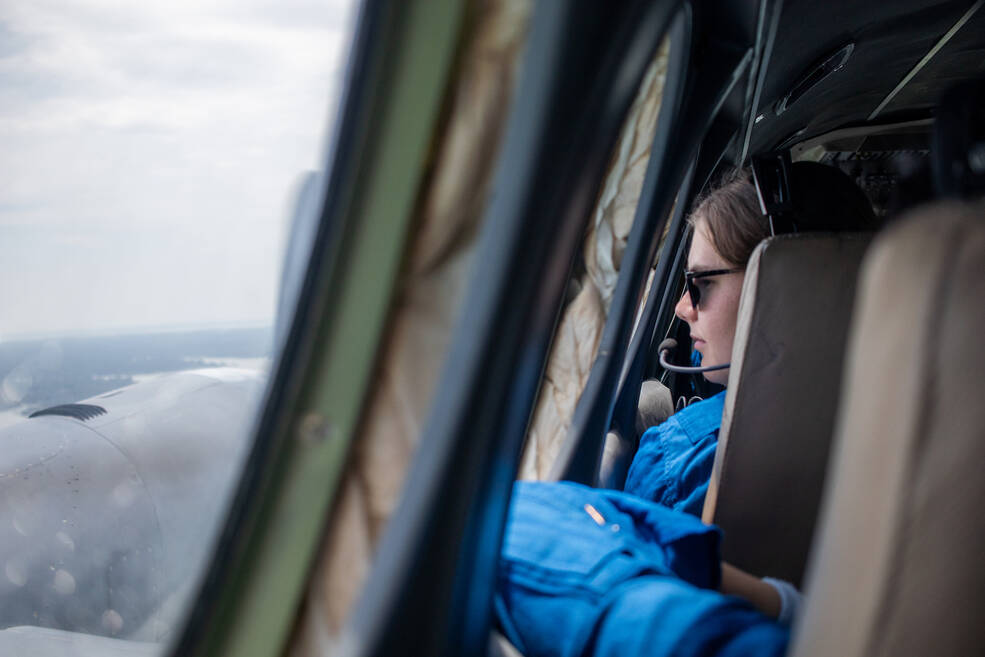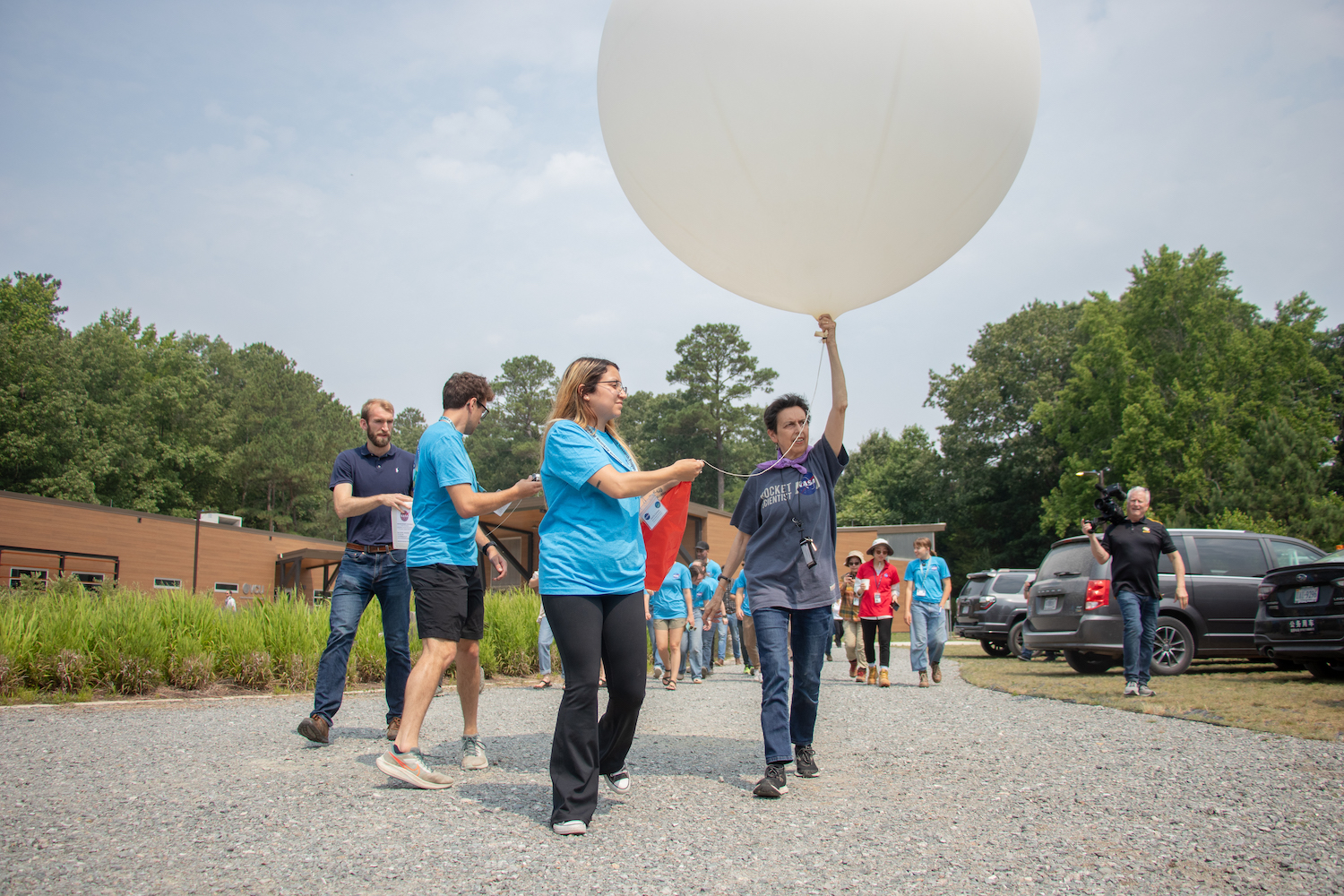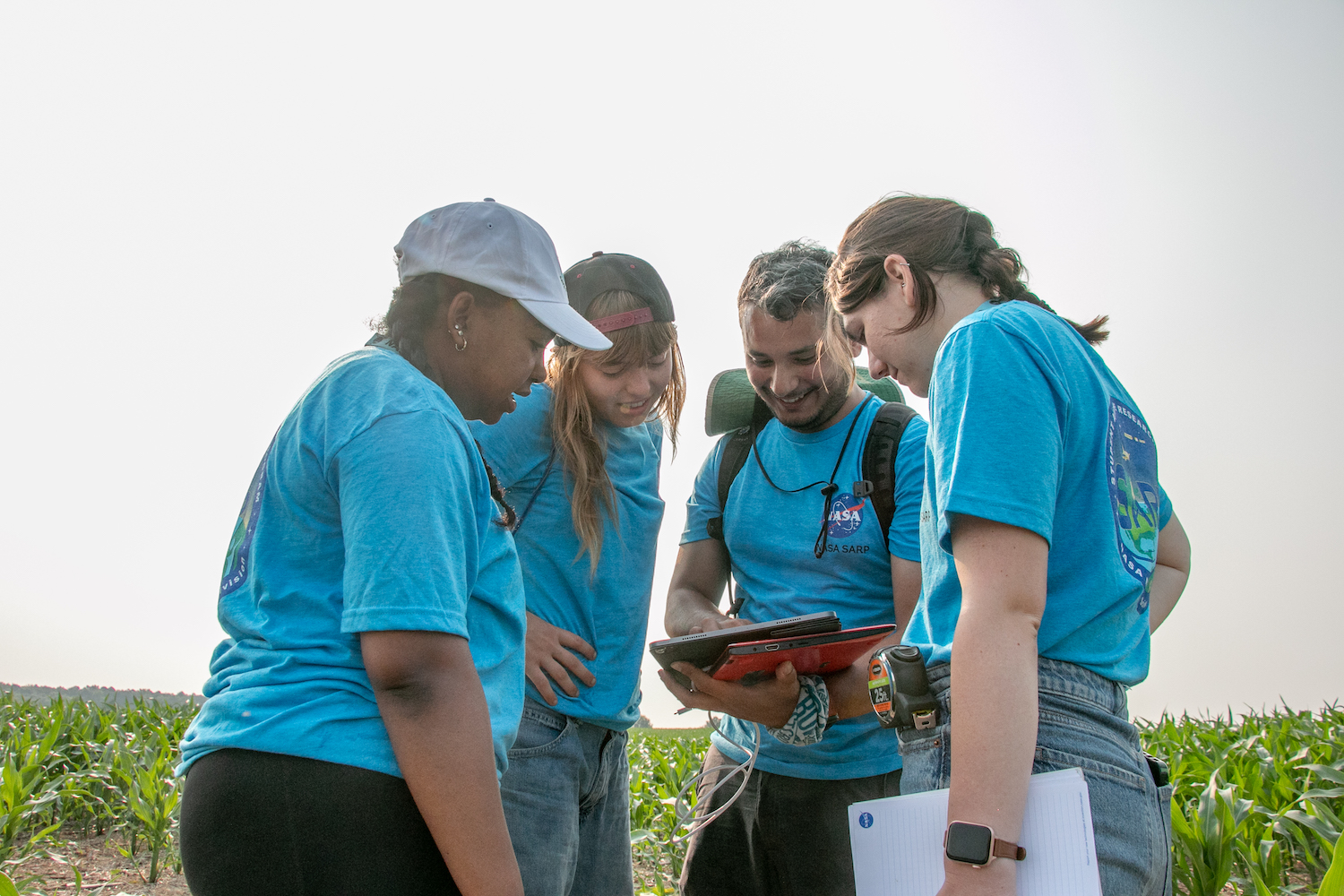Flying over and tromping through watery landscapes along the East Coast, working alongside NASA scientists, and recording measurements about the air that they’re flying through – these are not the usual experiences for an undergraduate student. For the 2023 participants in NASA’s SARP East program, it was part of a summer they won't forget.
Flying over and tromping through watery landscapes along the East Coast, working alongside NASA scientists, and recording measurements about the air that they’re travelling through – these are not the usual experiences for an undergraduate student. For the 2023 participants in NASA’s SARP East program – short for Student Airborne Research Program – it was part of a summer they won’t forget.
In June and July, 22 undergraduate students from universities across the United States convened in the Hampton Roads area of Virginia for an eight-week immersive research experience. Now in its 15th year – but for the first time on the East Coast – SARP gives participants the opportunity to conduct hands-on NASA research in different areas of Earth science and prepare research pitches and presentations. Undergraduates networked with and learned from both graduate student mentors and working scientists in the fields they are researching.
Credits: NASA Langley Research Center
“It’s about expanding the NASA tent, exposing students to how NASA does Earth science, and involving them in research in these interdisciplinary topics that they wouldn’t otherwise get to see,” said Bob Swap, SARP East program director and associate division director for mission planning at NASA’s Goddard Space Flight Center in Greenbelt, Maryland.
Though all the students are studying a topic within a STEM field, they come from a wide range of majors that bring unique perspectives to the research. Those varied backgrounds enhance the experience, bringing in knowledge from fields that aren’t explicitly related to Earth science.
“SARP has a lot of well-established and strong philosophies on equity and inclusivity,” said Susanne Craig, senior scientist in the ocean ecology lab at NASA Goddard. “The best science is done by a diverse group of people with lots of diverse lived experiences and different lenses to see questions through.”
Students of SARP
In their first year working on the East Coast, SARP organizers wanted to take advantage of the different aspects of Earth science that come together around the Chesapeake Bay region. Students were separated into groups to study the science of what the program dubbed “surf, turf, and above Earth.”
“The coordination of the SARP-East program gave us an unprecedented opportunity to assess the York and James rivers’ watersheds in a holistic way,” said John Bolten, chief of the hydrological sciences laboratory at Goddard and one of the program advisers. “The research incorporated observations of land surface hydrology, air quality, and water quality for a true Earth system science look at this vital watershed – and in a way that only NASA can do it.”
For instance, students boarded three planes dubbed “Sniffer,” “Pinger,” and “Looker” to investigate the environment of the Chesapeake Bay from above. The NASA research planes were equipped with instruments to measure aerosols, greenhouse gases, and soil moisture. On the planes, the students monitored the instruments and data, while taking in the views around them.
Sonja Moons has been studying quantum dots and spectroscopy as part of her chemistry and physics degree at Vanderbilt University. But as a member of the Salt Water Intrusion and Sea Level Rise team for SARP East, she had a chance to learn something novel. Her team looked at how sea level rise, storm surge flooding, and the proximity to hazardous chemical facilities could affect socioeconomically vulnerable people.
“We’ve spent a lot of time gaining a broader understanding of science that’s possible at NASA,” Moons said. “It has given me insight into the different paths I could go with my career and insight on things that I wouldn’t have considered and now know exist.”
Nathan Tesfayi, who studies environmental science and Spanish at the University of Georgia, did his SARP field work aboard a small research boat in the Chesapeake Bay. Nathan and his “Surf” teammates (self-named the “Students Undertaking Research in Freshwater”) took measurements of wind speed and direction and air temperature while faculty members were calibrating instruments. The Surf team also completed measurements with a Secchi Disk – an instrument that has been used for hundreds of years to measure water quality – and made water color measurements from an app on their phones.
“I’ve never been in a research vessel before, so the experience felt very immersive and collaborative,” Tesfayi said. “You really get the full experience. First, you’re looking down at the landscape that you’re flying over, and then next you’re actually in it and experiencing it.”
In addition to the field work, the students visited NASA Goddard to tour the facilities and talk with scientists in the Earth sciences division. Students also worked closely with and visited NASA’s Langley Research Center in Hampton, Virginia, and Virginia Commonwealth University in Richmond. SARP East is a collaboration between several interagency and university partners.
“We need a variety of perspectives and diversity of thought to be able to tackle the challenges facing the Earth and to ensure humanity’s ability to continue to thrive on our home planet,” said Joel Scott, program executive for Earth Science Data Systems at NASA Headquarters in Washington. “It comes down to inspiring and empowering the next generation of scientists.”
By Erica McNamee
NASA’s Goddard Space Flight Center, Greenbelt, Md.





























